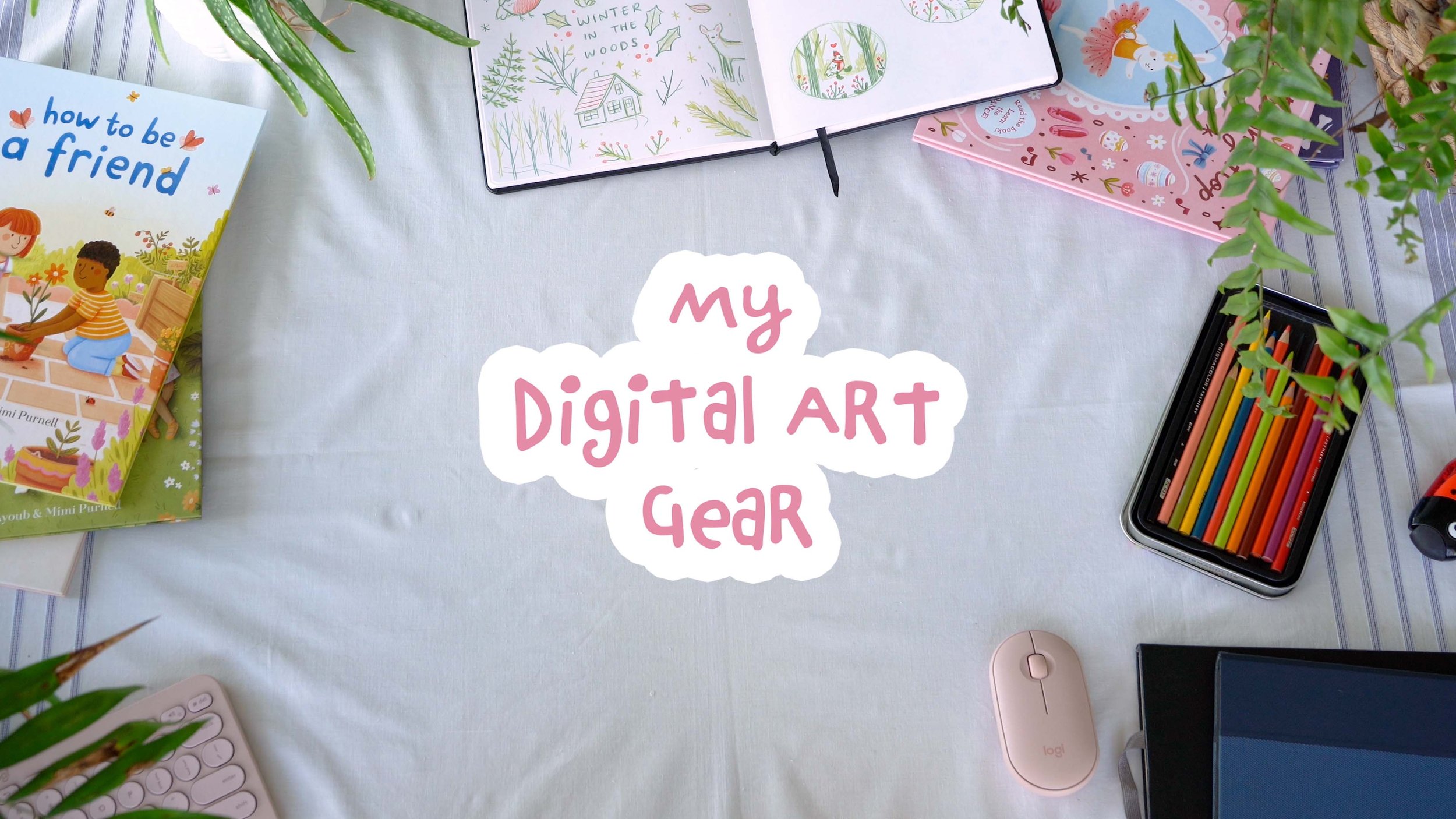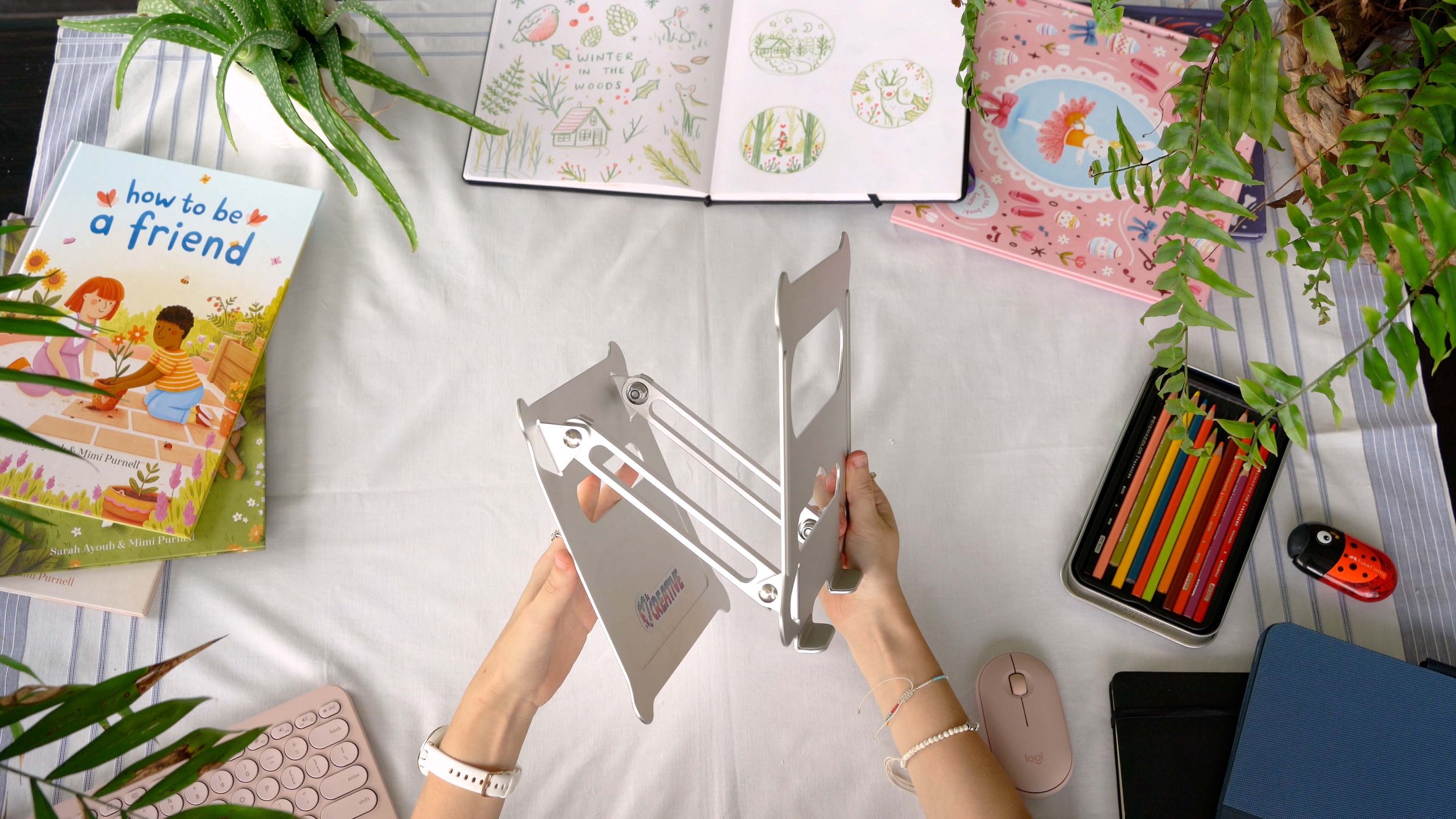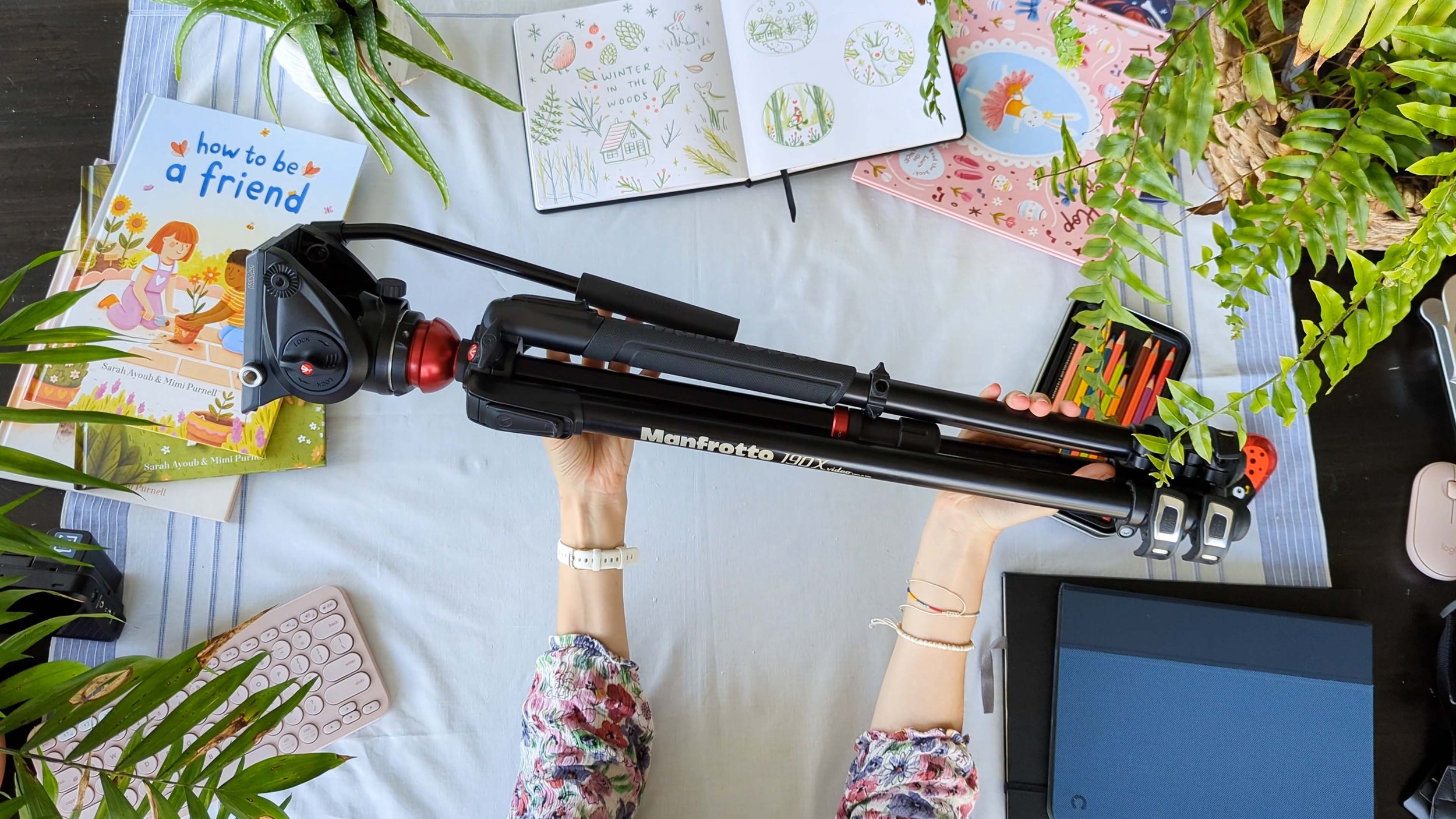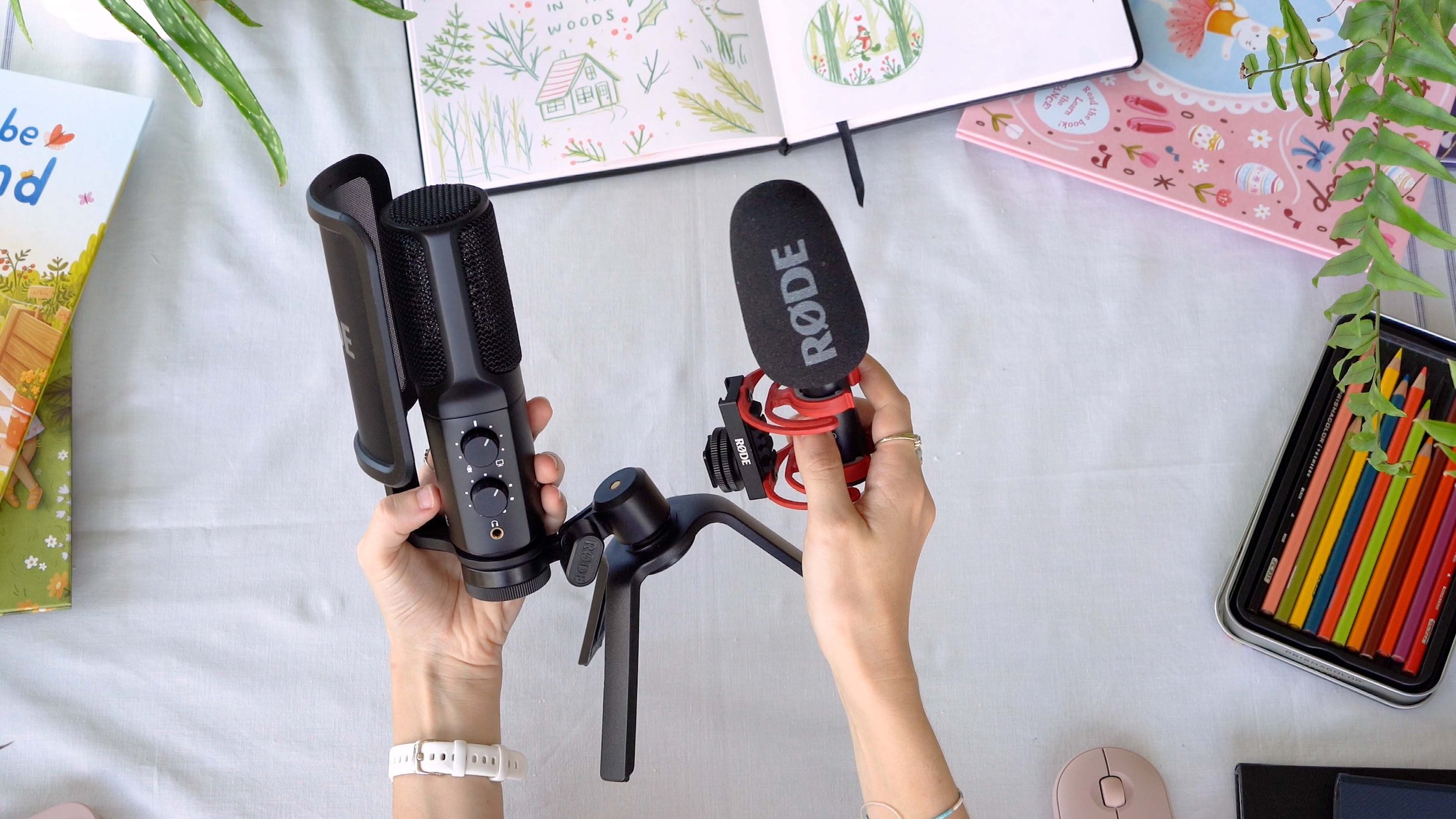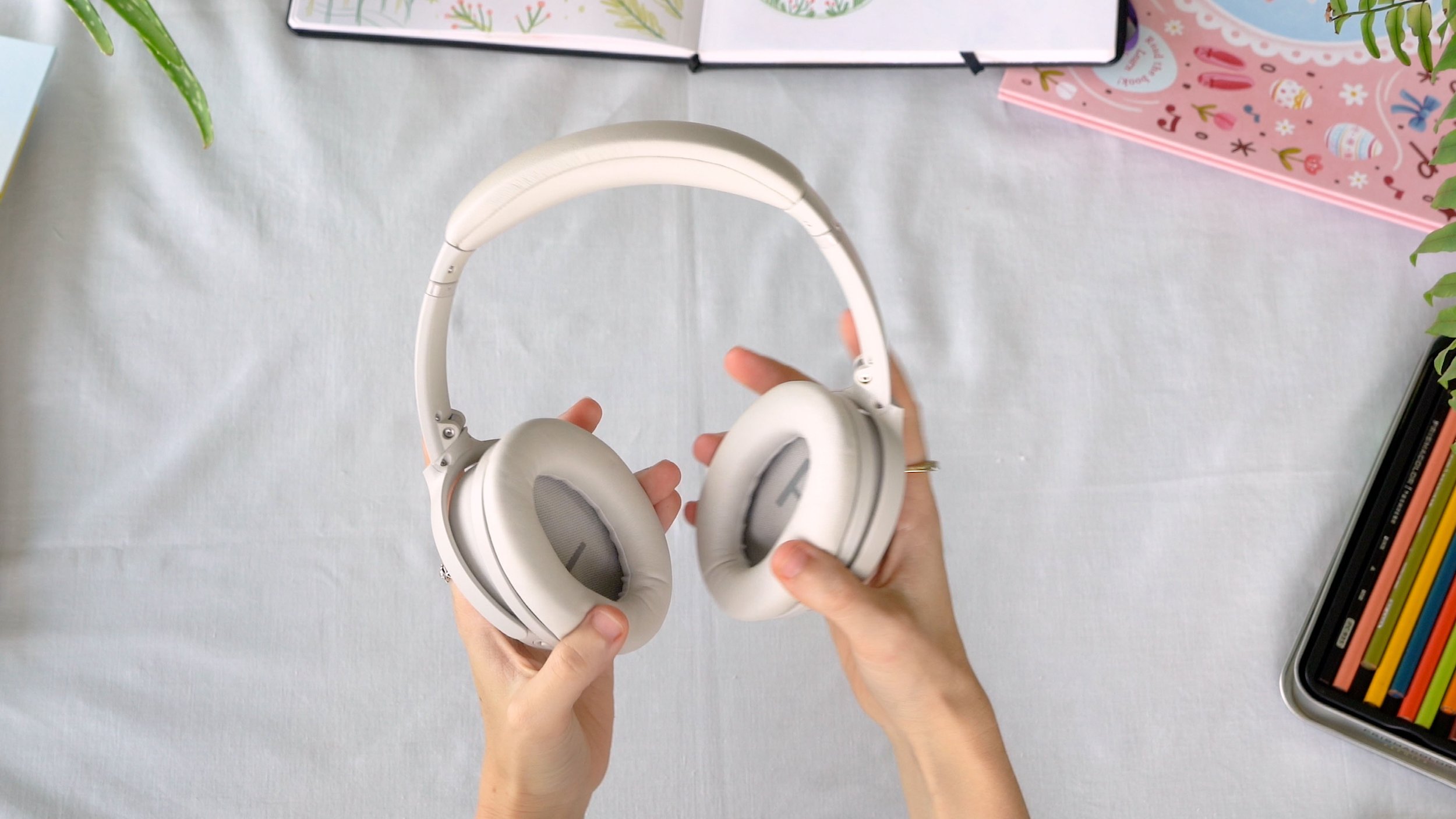Everything I Use as a Digital Artist & Content Creator to Run My Small Business!
I thought I’d take you on a tour of everything that I use to make digital art both for fun and for professional projects, what I use to make videos and content, and then I’ll share some tips for some budget friendly tools if you’re just getting started.
#1 - Photoshop
For most of my art I use Adobe Photoshop as my software of choice, and that’s partly because before I was an artist I was a graphic designer so when I was transitioning from design to art, Photoshop was just the software that I had available to me at the time.
It’s a really powerful program and there’s so much you can do with it so I love it for the flexibility. It’s less intuitive than programs that have been specifically designed with digital art in mind like Procreate or Fresco, but once you get over the initial learning hurdle there’s really not much that it can’t do.
#2 - Microsoft Surfacebook 3
I draw on a Microsoft Surfacebook 3 which is a 2-in-1 laptop so the screen can detach completely to act as a tablet or you can use the whole thing as a regular laptop. I don’t often use it fully detached, I mostly detach it so I can flip it around and reattach it, that way I have a large drawing tablet with all the power of the laptop.
I use the Microsoft pen with it and I really like it!
The Surfacebook 3 isn’t cheap, I re-invested the money I was earning from picture books to buy my current one but I use it for literally everything in my business and it means that I can work remotely which is really important to me.
#3 - Logitech K380 keyboard + Pebble mouse
I have a really cute Logitech K380 keyboard and Pebble mouse to use with my laptop, they’re wireless so they just connect via bluetooth. They’re smaller than a regular keyboard and mouse but they’re just the right size for me, and I like that they come in different colours so you don’t just have to have a grey or white keyboard.
Having a separate keyboard is important with my current setup because I need to be able to use keyboard shortcuts when I use Photoshop so I can just have it sitting next to my screen when my laptop is in tablet mode.
#4 - Laptop Stands
I have a couple of different stands for my laptop for when I’m working, I have a chunkier one that I got from Amazon that’s really good for drawing because I can adjust the height and the angle, and I have a second one that I take travelling because it packs away really small but the downside is that it doesn’t have any height adjustment, just an angle adjustment.
#5 - iPad Air 4th gen
Now because a lot of you use Procreate, I also bought an iPad Air 4th gen a couple of years ago so that I could learn to use it, that way when I make tutorials or brush packs I can make them for both Photoshop and for Procreate.
I like Procreate for how intuitive and beginner friendly it is so it’s a really great program, plus it’s just so convenient to be able to take an iPad pretty much anywhere for drawing.
So that’s everything I use for digital art, sometimes I enjoy drawing in my sketchbook too but I have pretty simple supplies for that.
#6 - A4 Moleskine + Articka sketchbooks
I have an A4 Moleskine sketchbook, and a square Articka sketchbook that was gifted to me last year, and they’re both good books.
#7 - Prismacolor pencils + Ladybug sharpener
I’m using Prismacolor pencils which are lovely to use, and I have this cute ladybug sharpener that I got on Amazon.
Now let’s have a look at the gear I use for making content.
#8 - Google Pixel 6 Pro
First, I have my phone which is a Google Pixel 6 Pro and I use it quite a lot for filming content and taking photos. I’m all about minimal fuss - I don’t like setting up lights and big cameras, I’d rather just take the stress free route and film things really simply, so having a phone with a decent camera is really useful.
#9 - Sony A7III
Then we also have a full camera which is a Sony A7III. It actually belongs to my partner Dan but he does a lot of the filming and editing for this YouTube channel so we use it for my content. He uses a Tamaron 28-200mm lens and a Tamaron 24 mm lens. He also uses a SanDisk Extreme 128gb SD card for storage which will record about 2.5 hours at 4k.
#10 - Manfrotto tripod
We have a nice Manfrotto tripod but we don’t take it travelling with us because it’s way too big so when we do travel we just end up using ironing boards or anything we can find lying around the house we’re staying in!
#11 - Atomos Ninja
Sometimes I need to record my screen directly so Dan has this Atomos Ninja external screen recorder which just plugs into my laptop and acts as a second monitor that I can record on. I use this a lot for video tutorials for my Patreon, I could use OBS screen recording software but if I’m also using Photoshop at the same time then my laptop gets a bit slow and hot so that’s why I use the external monitor to record my screen for those tutorials.
#12 - Rode Desktop Mic + Rode Shotgun Mic
Once we’ve done all of the filming I record a voiceover and we have two microphones for that, we started with a Rode desktop mic and it’s really good but it was quite bulky for travelling so we got the much smaller Rode shotgun mic for when we’re living out of suitcases. They’re both good microphones, we almost exclusively use them for voice-overs because we don’t record a lot of sound while we’re filming so they’ve been great for what we need.
#13 - Bose noise cancelling headphones
Another tech thing that I love is my Bose headphones, I don’t need them for content necessarily but they’re noise cancelling so they really help me focus when I’m drawing or writing a script or just trying to get in the zone. I’ve never had noise cancelling headphones before and honestly with the amount of productivity they’ve saved me they have definitely paid for themselves!
#14 - Adobe Premiere Pro + After Effects
Then when it comes time to edit, Dan uses Adobe Premiere Pro. He was a video editor long before I started this YouTube channel and it’s always been his editing program of choice so he still uses that for all of my content. If we want to add any animations he’ll make those in Adobe After Effects and import them into Premiere Pro.
#15 - Epidemic Sound
When it’s time to add music we use Epidemic Sound who are really awesome and have a great library of music for content creators. They have lots to choose from and they have categories for different types of content which makes things nice and simple, and you can actually see the exact songs we use a lot in my Epidemic Sound playlist in the description if you wanted to use the same music for your own content.
#16 - TubeBuddy
So once Dan has edited together a YouTube video I upload it with the help of TubeBuddy which is a software that integrates with YouTube and helps you write titles and descriptions that are optimised so they’re more likely to be found. I’ll still write a title that I want but it helps me swap out keywords that might perform better than others.
You can find an overview with links to everything I talked about in this blog on my Tools page so go and check that out if you need an easy reference!
Disclosure: Many of the links provided on this website are affiliate links. I will be paid a commission if you use these links to make a purchase. This is at no additional cost to you and helps to support me make more art content!My Gear
Photoshop
Adobe Premiere Pro + After Effects
Check Out My Latest Youtube Video!


